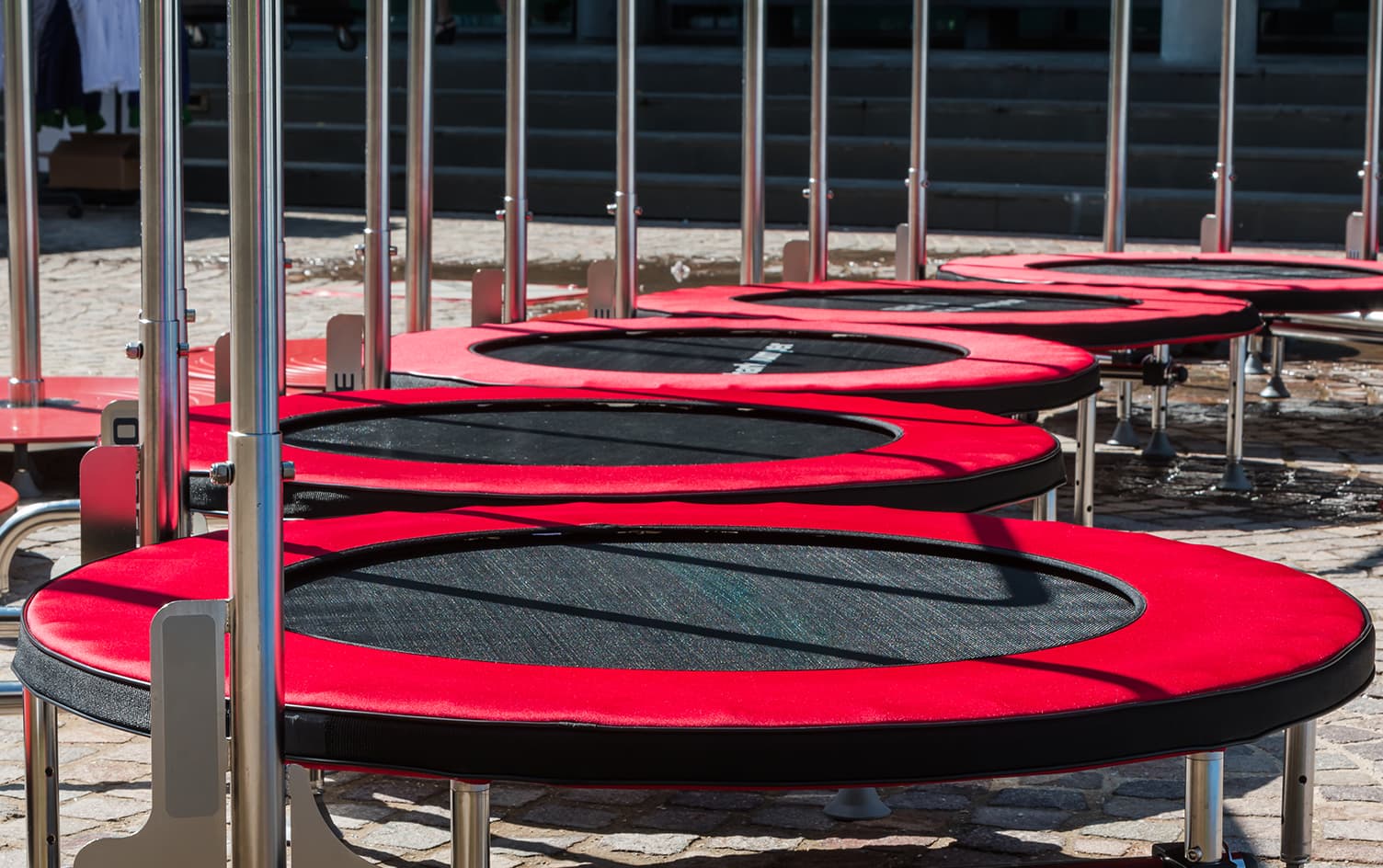Trampolines aren’t just for kids anymore. For adults, jumping on a trampoline offers far more than mere entertainment. Rebounding can be a full-body workout that builds muscle and increases cardiovascular fitness — all while channeling your inner kid.
WHAT IS REBOUNDING?
Rebounding is the technical name for hopping on a mini trampoline, or rebounder. When you bounce on a rebounder, your body goes through several actions. First, you experience acceleration as you spring upward. This is followed by a split-second of weightlessness in the air. You will then decelerate at an increased g-force downward to hit the trampoline and bounce back up — thus repeating the process over and over.
WHAT ARE THE HEALTH BENEFITS OF REBOUNDING?
Rebounding has been around for a long time, but its resurgence began in the 80s. That’s when NASA researched its benefits as a means of finding an effective way for their astronauts regain bone and muscle mass after being in outer space. NASA discovered that rebounding:
- Can work the entire body without applying excess pressure to the legs and feet.
- Increases oxygen uptake about 68% more than running does due to the increase g-force.
- Benefits the body on a cellular level at a greater rate than other methods of exercising.
In addition to torching calories and being fun, rebounding has been said to provide an array of benefits to the body such as:
- Works the Entire Body: “Rebounding itself creates an increased g-force (gravitational lead) affecting our body, which positively stresses every cell in our body and involves more than 400 muscles working at the same time,” says Jakub Novotny, a master trainer at Jumping Fitness. “While you are rebounding, the whole body must be engaged, starting with the core, and working together as one unit.”
- Oxygenates and Is Anti-Aging: As demonstrated by the NASA study, rebounding is a great way to boost the oxygen levels in your cells. “As muscles relax, the arteries through the body relax and expand, and all the body’s organs are filled with blood rich in oxygen and nutrients,” says Manhattan-based dermatologist Dr. Natasha Sandy. “This is great for anti-aging!”
- Is Joint-Friendly: “It reduces the amount of gravitational pull exerted on your body as you rebound, which effectively cuts down on the strain that is placed on your joints,” says Caprice O’Bryant, a certified personal trainer and owner of Excuse Free Fitness. “This makes it a low-impact workout because it decreases the shock on your joints by more than 85%.” Novotny adds that he’s had many clients that are unable to run due to knee issues that do very well on rebounder workouts. “On a trampoline, our feet land to a soft mat, which makes rebounding very friendly to our joints,” he says.
- Elicits Pure Joy: O’Bryant stresses that among the many benefits of rebounding, it’s important to remember that an overall appeal of bouncing on a mini trampoline is the fact that it is fun. “We have so many duties, tasks and responsibilities already that we don’t need to have our workouts feeling like a chore because sometimes it’s the only hour we get to ourselves all day,” she explains. “When you’re doing a creative and fun workout, you are more likely to stick with it! Have you ever watched the pure joy of a kid jumping on a bed? It’s the same adrenaline and excitement for rebounding, so I’m calling it impossible to not love this workout.”
WHERE TO TRY REBOUNDING?
Rebounding classes can be found around the country. Check out your gym’s group fitness schedule — Crunch offers Urban Rebounding at its New York locations and elsewhere, for example — or seek out a trampoline studio, such as Jump Life in Los Angeles or Airobics in Chicago.
HOW TO DO IT AT HOME?
No classes near you? You can also rebound in the comfort of your own home. Rebounders cost anywhere from $40–$200, depending on the size and type.
To reap the benefits of rebounding, experts like Novotny suggest doing it for a minimum of 15 minutes per day. This can be performed in one session or split up throughout the day.
Choose a rebounder with solid springs so you can jump with shoes or in bare feet. Beyond just jumping, try doing jumping jacks, high knees, running in place, dancing or bouncing from side to side to shake up your workout. Or use Novotny’s go-to guide for beginners:
- Jogging: Mimic a jog, but lift your knees to your hips. Try to maintain a 90-degree angle between your thighs and shins. To challenge your core more, double-time the movement. Don’t forget to use your arms as well, and use them as you would for regular jogging.
- Basic jumping: Spread your feet shoulder-distance and bounce. Focus more on bounces than height. Play with directions or shifting/transferring weight from one side to the other.
- Side steps: Jump in the center of the trampoline, keeping your feet together. Perform a single step to the side of the trampoline and return. Alternate legs. You can play with the directions and move to the front and back as well, or modify the rhythm by double-timing it.
- Squats/lunges: These exercises require extra balance on a trampoline. A trampoline also allows you to do jump squats and jump lunges. When you are returning from the squat or the lunge, perform an additional jump to add more intensity.




